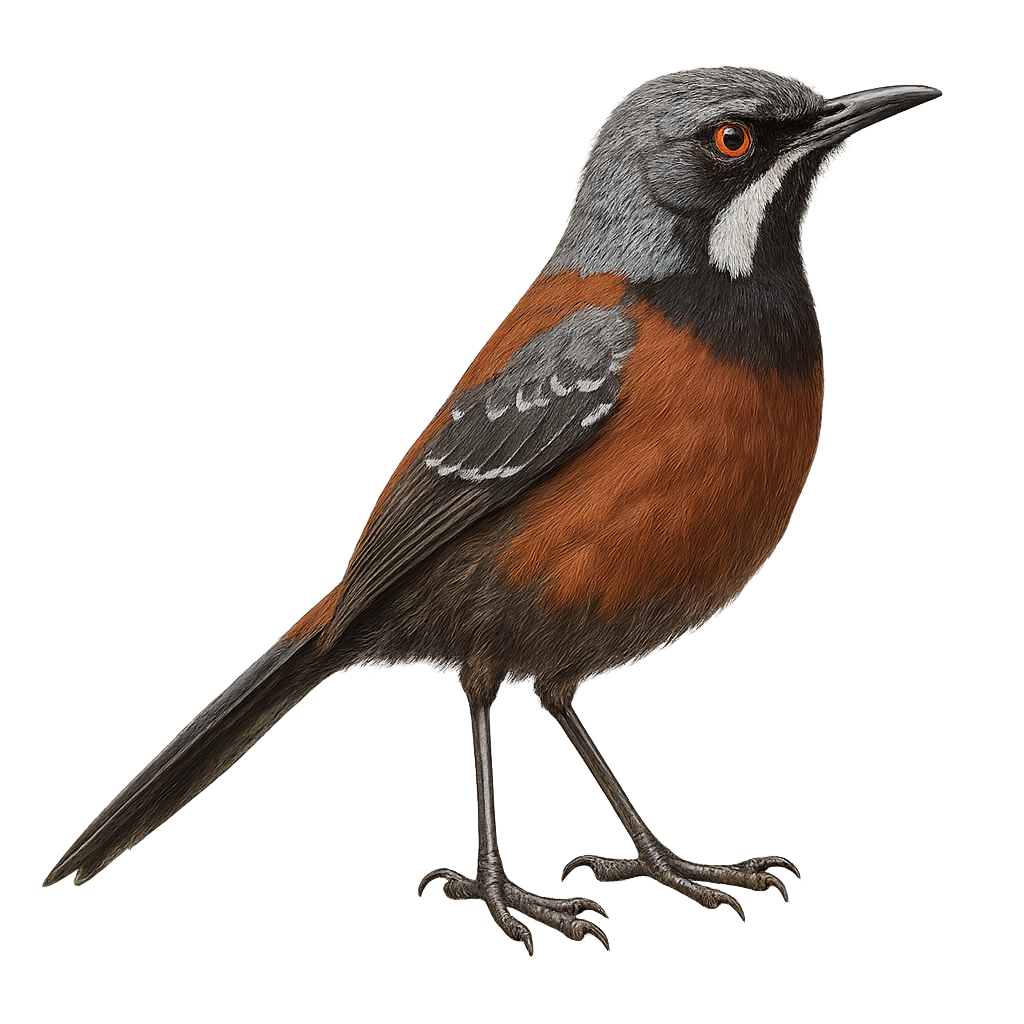Your wildlife photography guide.
Explore the cape rockjumper in detail, study its behavior, prepare your shots.
Where to observe and photograph the cape rockjumper in the wild
Learn where and when to spot the cape rockjumper in the wild, how to identify the species based on distinctive features, and what natural environments it inhabits. The WildlifePhotographer app offers tailored photography tips that reflect the cape rockjumper’s behavior, helping you capture better wildlife images. Explore the full species profile for key information including description, habitat, active periods, and approach techniques.
Cape Rockjumper
Scientific name: Chaetops frenatus

IUCN Status: Least Concern
Family: CHAETOPIDAE
Group: Birds
Sensitivity to human approach: Suspicious
Minimum approach distance: 10 m
Courtship display: September to October
Incubation: 17-19 jours
Hatchings: September to November
Habitat:
Rocks, mountains, alpine meadows
Activity period :
Primarily active during the day, with peak activity in the morning and late afternoon.
Identification and description:
The Cape Rockjumper, or Chaetops frenatus, is a bird endemic to the mountainous regions of southern Africa, primarily in South Africa. It is recognizable by its distinctive rufous tail and brown-grey plumage. This bird prefers rocky and mountainous habitats where it can move nimbly in search of food. It primarily feeds on insects and small invertebrates, which it captures by foraging on the ground or catching in flight. The Cape Rockjumper is a social bird, often observed in small family groups. Its ability to adapt to harsh environments makes it a fascinating example of South African biodiversity.
Recommended lens:
400mm – adjust based on distance, desired framing (portrait or habitat), and approach conditions.
Photography tips:
To photograph the Cape Rockjumper, it is advisable to use a lens of at least 400mm to capture detailed images from a distance. Look for rocky and mountainous areas where these birds are active. Be patient and discreet, as they can be suspicious. Morning or afternoon light is ideal for achieving photos with good contrast and natural colors. Use a tripod to stabilize your camera and avoid blurring.
The WildlifePhotographer App is coming soon!
Be the first to explore the best nature spots, track rutting seasons, log your observations, and observe more wildlife.
Already 1 430 wildlife lovers subscribed worldwide

